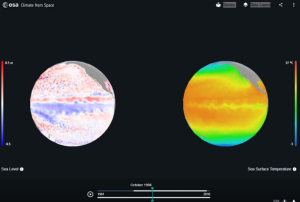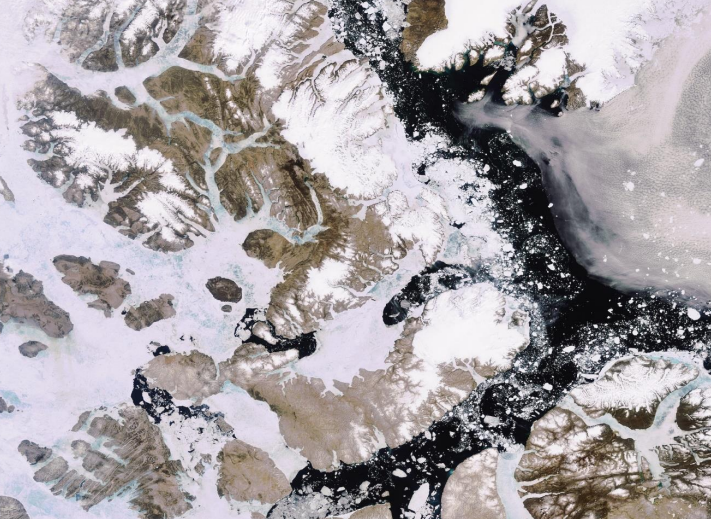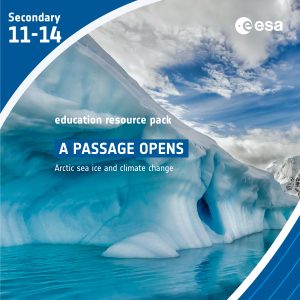A Passage opens – Arctic sea ice and climate change
In this set of three activities, students will discover the important role Arctic sea ice plays in the Earth’s climate system. The activities are set in the context of the Northwest Passage. The first activity is a mathematical investigation into sea ice melt rate to illustrate what is meant by Arctic amplification. A practical investigation provides an opportunity to discuss how models are used in science and consider the difficulties of measuring and predicting the effects of climate change. Students then use the Climate from Space web application to explore seasonal and long-term trends in sea ice extent and sea surface temperatures.
Subject Geography, Earth Science, Physics, Chemistry
- Explain how the differing albedo of ice and ocean leads to Arctic amplification and the impact of this on climate change
- Use a mathematical model to investigate the effect of different conditions on the melting of sea ice
- Relate an experimental model to the real world and evaluate the model
- Analyse images to obtain data on the melting of ice
- Discuss the challenges of collecting data to describe and predict the effects of climate change
- Use the Climate from Space web application to explore changes in the Arctic region
- Relate changes in the seasonal pattern of sea ice extent to changes in sea surface temperatures
- Suggest reasons for changes over various timescales
- Information sheet 1 (2 pages)
- Student worksheet 1 (2 pages)
- Climate from Space online resource: Breaking the Ice story (optional)
- Calculator or/and access to spreadsheet software
- Graph paper
Each group will need:
- A beaker, small tray or bowl
- Three or four beads or buttons of different colours
- Play dough to fix the markers in place
- At least three ice cubes or blocks of a similar size made from coloured water
- Beaker or jug
- Hot and cold water
- A thermometer
- Smartphone or tablet with a camera
- A stack of books or block of wood to support the phone/tablet
- A clock or timer (the classroom clock will suffice)
- Towels for wet hands and to deal with any spills
Students will also need:
- A copy of Student worksheet 2 (2 pages) for each student
- Access to image-processing software with which they are familiar
- Printer (optional)
- Acetate sheets printed with a grid (optional)
- Squared paper (optional)
- Tracing paper (optional)

Did you know?
-
The Northwest Passage is about 1900 km shorter than the route via the Panama Canal.
-
Freshly falling snow can have an albedo up to 0.90. This decreases as the snow becomes older and turns into ice crystals.
-
Ice floats because it is less dense than water. This is unusual because most substances are denser when they are solid than when they are liquid.
-
Sea ice concentration can be measured with satellite instruments that detect microwave radiation.
-
A fleet of microwave satellites capable of measuring sea ice concentration has been operational for more than four decades.
-
Many Earth observation satellites are in such orbits that they cannot take measurements directly above the North or South Pole – although they can ‘see’ everywhere else on Earth.

Astro farmer
Brief description:In this set of six activities, students will investigate which factors affect plant growth, and relate these factors to...
Taking the Pulse of the Planet- Upper secondary
Brief description In this set of three activities, students will learn about how data is collected by sensors and how...
Earth under the lid – Understanding the greenhouse effect
Brief description In this set of two activities, pupils will learn about our atmosphere and the greenhouse gases that it...


